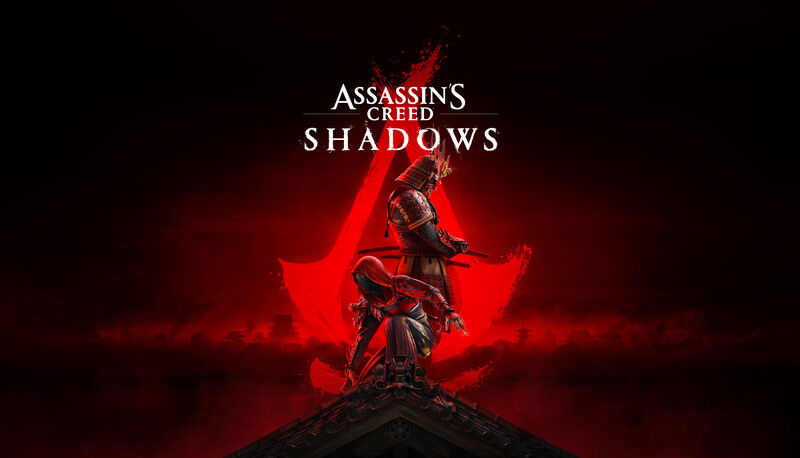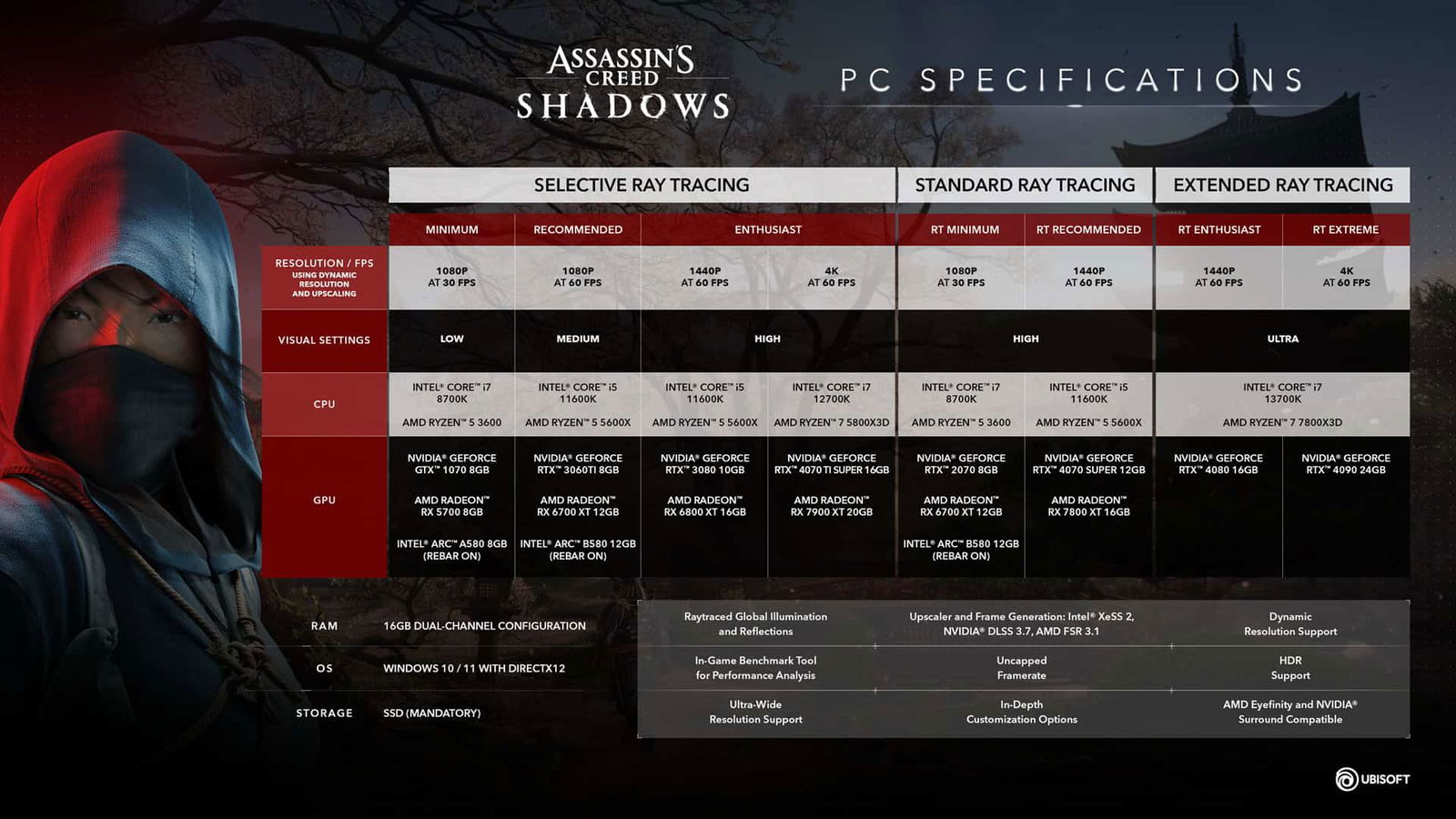Assassin’s Creed Shadows is now just over a month away. With launch fast approaching Ubisoft recently released a new trailer focused on PC and New-Gen features.
I will say I’m impressed by what seems to be a very customizable PC experience. This level of control over your game on PC is something that not all games give to the player, with options often missing or lackluster.
One thing that caught my eye is Assassin’s Creed Shadows receiving Ultra-Wide support. I don’t have an Ultra-Wide monitor myself but having more titles support a technology is never a bad thing. Our editor-in-chief Keith Mitchell will particularly enjoy this as he’s always complained about the lack of official Ultra-Wide support in PC game releases.
Another noticeable element of the trailer is Ubisoft’s partnership with Intel to optimize Assassin’s Creed Shadows for their Intel Ultra processors and Intel Arc graphics cards. We have seen games make these kinds of deals (which are essentially just marketing) in the past. Sometimes, such deals have led to games being unoptimized for competing hardware and/or lacking support for alternative technologies. However, this hopefully won’t be the case with Assassin’s Creed Shadows. The trailer also confirms support for all upscaling and frame-generation technologies.
Developer Q&A
Alongside this trailer, Ubisoft also released a Tech Q&A, where they took community questions from social media. Ubisoft put these questions to Assassin’s Creed Shadows Technology Director Pierre F.
Q. In terms of performance, do the PS5 and Xbox series X versions have a 60 fps mode?
Pierre F: Yes! We’re happy to confirm that both the PS5 and Xbox Series X will allow players to play at 60 FPS 2160p upscaled, in performance mode. More details on the modes available on consoles will be shared before the game’s launch.
Q. Given the game is using heavily resource demanding features like RTGI and with current-gen console hardware being what it is, what is being done to ensure that the console versions won’t be too heavily compromised with regard to image quality in order to accommodate these features?
Pierre F: That is really a good question from Danghunk! Reaching 60 FPS on a game like Assassin’s Creed Shadows while using RTGI would mean sacrificing quite a lot to accommodate for its relatively high cost. Thus, the direction we took for Shadows was to use a hybrid approach.
Anvil, our in-house engine with which AC Shadows is built, has featured an industry-leading baked (offline) global illumination pipeline since AC Unity, and we have kept improving that over every game built since. Unity introduced it, Syndicate added support for dynamic time of day cycles, Origins introduced what we call a sparse GI system to support drastically larger open worlds, and Valhalla added support for multi-state environments, as it was necessary for the settlements. On Shadows, we continued to improve this technology by adding support for the new dynamic seasons – the global illumination of a scene is drastically different if there is a snow cover compared to lush vegetation with colorful flowers blooming – as well as supporting much thinner walls.
The advantage of this proven, yet modernized technology is its relatively low GPU cost. This allowed us to target a 60 FPS experience on Xbox Series X and PS5 that is still impressive, in which we still had room for new gen improvements. For example, it is worth noting that all the vegetation in AC Shadows is physically animated on the GPU based on a dynamic wind system driven by a fluid simulation!
Finally, we didn’t want the image in performance mode to be so low resolution that it becomes blurry, and targeting 60 FPS with raytracing on console would have meant we would not have had enough GPU budget to improve other rendering systems.
However, it was clear to us that there are undeniable advantages to raytraced global illumination. First and most importantly is that it adapts to change in the scene. In a game such as Shadows, in which we had strong ambitions with destructible objects and a changing environment, the benefits in image quality of having a global illumination that adapts to the change in the scene are numerous. Furthermore, raytraced global illumination implicitly introduced raytraced ambient occlusion, which adds subtle, yet noticeable details to the image. Furthermore, we are no longer bound to fixed size world space resolutions for our GI, which increases lighting quality details. But, most importantly, we had one game feature that we really want to introduce, the Hideout, that simply could not exist without raytraced global illumination to make it as we wanted it to be.
Q. Can you tell us more about the “Atmos” tool that controls the weather system in the game? What’s the difference of having this tool in AC: Shadows compared to the older games?
Pierre F: Atmos is a procedural, physics-based weather simulation that generates cloudscapes in Shadows. Before, clouds were manually crafted by artists and copy-pasted in the sky, like a photoshop montage. This limited the variety of cloudscapes that were possible to create, and oftentimes ended up in unnatural compositions. With Atmos, we’re able to simulate natural cloud formations and they aren’t static anymore: they constantly evolve over time. Transitions between weather states are more fluid as well – for example, after a storm, clouds dissipate in a very natural way.
You can find the request of the Q & A on Ubisoft’s Website. There’s interesting questions regarding PC specs, Accessibility features and more.
I’m intrigued to find out how well optimised Assassin’s Creed Shadows is, especially for the PC which is where I will be aiming to play the game. If you haven’t seen the PC specs yet take a look below, and let us know is your rig up to the test of Assassin’s Creed Shadows?
Assassin’s Creed Shadows will be released for Xbox Series X/S, PS5, and PC on March 20th, 2025.



